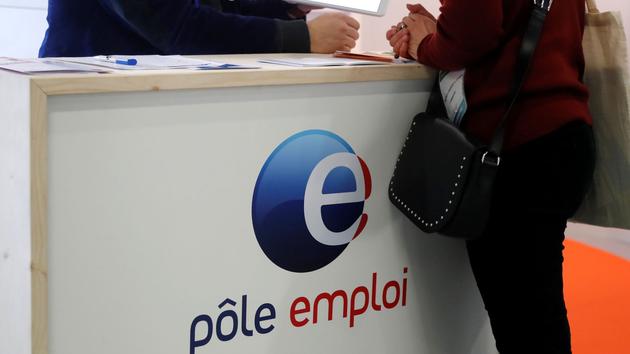Everyone expected a tidal wave and an unprecedented influx of unemployed at the doors of the Pôle Emploi agencies in 2020 after the outbreak of the crisis ... It is clear that this worst-case scenario has, for the time being , been avoided.
While there is no doubt that the Covid-19 crisis has indeed damaged the French labor market in recent months, erasing several years of clear and constant improvement, the shock experienced since last March is proving to be however less strong than feared.
Thus, the number of job seekers registered in category A (without activity) of Pôle Emploi in all of France (excluding Mayotte) jumped by 265,400 over the whole of 2020 to reach 3.817 million people.
That is an annual increase of 7.5%, according to data communicated Wednesday by Pôle emploi and the Ministry of Labor.
If we broaden the spectrum by including those registered in categories B and C (unemployed in reduced activity who did a small job over the period), the increase is almost identical over one year, but at a much higher level, just barely above the… 6 million people mark.
Read also:
Employment, unemployment ... Words and figures no longer reflect reality
Everything therefore suggests that the various measures to help businesses and maintain employment, with in particular the partial unemployment mechanism, deployed by the executive since March 2020 have made it possible to limit social damage on the labor front. employment.
Because, to give a point of comparison, during the financial crisis of the 2010s, the number of job seekers had exploded by 509,000 in category A of the Pôle Emploi and 657,900 in the first three categories.
That is to say an increase twice as high as that recorded for the whole of 2020.
“Even though the numbers are very violent and really unusual, they are still less frightening than one might expect. Undeniably, partial unemployment has helped to preserve employment but also to smooth out the destruction of jobs and layoffs. This means that as long as this aid is maintained, we will not see all the effects of the crisis on employment, ”
said Erwann Tison, director of studies at the Sapiens Institute.
To read also:
Mathieu Plane and Emmanuel Jessua: "The curve will not be reversed this year"
The figures for the second quarter, which attested to 830,900 new arrivals of job seekers in category A of Pôle Emploi, nevertheless suggested the worst for the year 2020. But since then, the trend has clearly reversed with a decline of 483 200 unemployed in the third quarter due to a switch between the different categories of Pôle Emploi.
Indeed, if the number of unemployed had decreased in category A in the summer, it increased by 453,800 for categories B and C. Between the lines, this meant that all the people who had found themselves in the second quarter without any activity - and de facto had switched massively to category A - gradually returned to where they came from, either in reduced activity, and resumed odd jobs here and there.
Disconnect the aids
And despite a curfew and a re-containment, the figures for the fourth quarter confirm this rather positive dynamic with a further decline of 2.7% in category A, or 107,400 fewer people, and of 1% in category B. Only category C saw an increase of 2.5%.
So far, companies have not yet made many redundancies, especially eliminating fixed-term or temporary jobs, a real adjustment variable for the crisis.
However, for 2021, the context remains very uncertain, while the epidemic is not weakening and the threat of a third confinement is becoming more and more precise.
In fact, the improvement on the employment front is not expected in the first quarter, or even in the first half according to many economists.
According to these specialists, the way in which the executive will disconnect aid will have a direct impact on the future situation on the labor market.
“Short-time working is the best shield to protect employment.
But you have to keep in mind that it freezes the situations: in a certain way, it prevents recruitments and also dismissals.
So we can fear that once this aid is disconnected, the worst is yet to come, ”
explains Erwann Tison.
The message is clear, optimism should not be in order.

